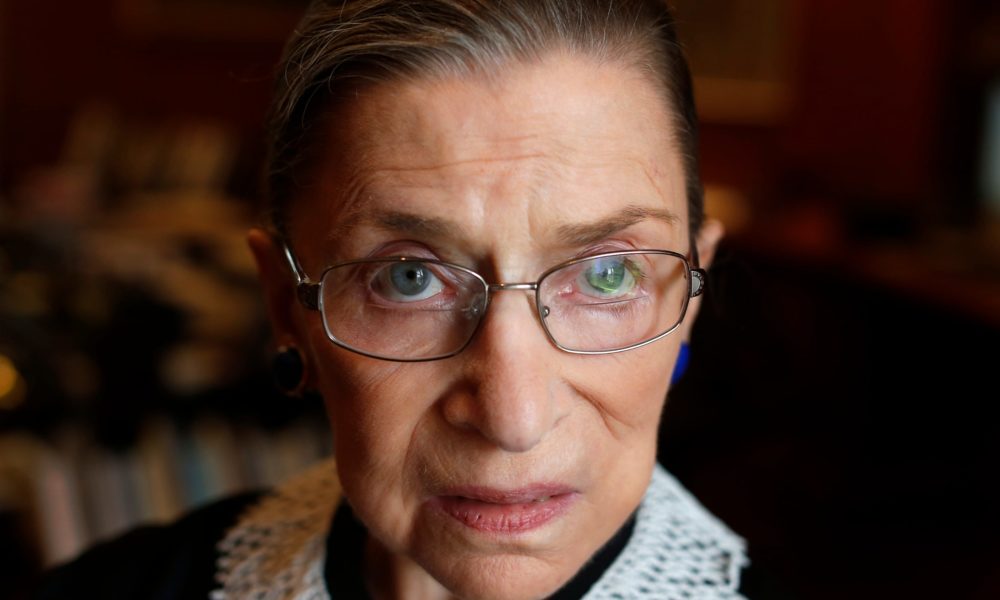Workplace discrimination
Barbara McQuade, Opinion columnist
Published 11:57 p.m. ET Sept. 18, 2020 | Updated 12:09 a.m. ET Sept. 19, 2020
Workplace discrimination We take Ginsburg’s successes for granted now, but she was the one who brought to the Supreme Court the perspective of women’s rights.
She was not the first woman justice, but she was the first voice for women’s justice.
Ruth Bader Ginsburg dedicated her career to gender equality before being appointed to the U.S. Supreme Court in 1993, where she served until her death. While Sandra Day O’Conner had the distinction of being the first woman in American history to serve on the Supreme Court, it was Ginsburg who brought to the court the perspective of women’s rights.
Sometimes referred to as “the Thurgood Marshall of gender equality law,” Ginsburg argued six cases before the court on which she would one day sit, winning five. While serving as director of the Women’s Rights Project of the American Civil Liberties Union, Ginsburg developed a novel legal strategy in gender discrimination cases, finding male plaintiffs to challenge laws that discriminated “on the basis of sex,” a phrase that would later become the title of a biopic about her life.
One of the cases she argued resulted in court decision that the 14th Amendment’s Equal Protection Clause applies to women, now taken as a given. Another case she argued led to the development of the test known as “intermediate scrutiny,” requiring proof of a substantial government interest before the government may enact a law that discriminates between men and women.
USA TODAY News: Ruth Bader Ginsburg: Second woman on Supreme Court had been nation’s leading litigator for women’s rights
As a Supreme Court justice, Ginsburg wrote the opinion striking down the men-only admissions policy of the Virginia Military Academy, finding that it violated her old friend, the Equal Protection Clause. Her dissent in a case involving pay discrimination in the workplace led to the enactment of Lilly Ledbetter Fair Pay Act.
Ginsburg served on the District of Columbia Court of Appeals for 13 years before President Bill Clinton named her to the high court. At the time of her appointment, she was deemed a “moderate.” She would come to be considered part of the Supreme Court’s liberal block, a description that may indicate that the court changed as much as she did.
Workplace discrimination Ginsburg faced down detractors
Ginsburg’s presence on the court highlighted the importance of diverse perspectives in judicial decision-making. In what may have struck others as counter-intuitive, Ginsburg advocated against laws that appeared on their face to favor women because they were based on stereotypes that harmed women in the long run. The contributions Ginsburg made opened doors for other women who came later. Elena Kagen credited Ginsburg with making the way easier for her when she joined the court in 2010.
Ginsburg’s feminist views did not prevent her from sometimes filling traditional roles. She began her legal studies at Harvard law school, and dutifully followed her husband to New York, transferring to Columbia to finish her legal education.
More: Supreme Court’s Trump subpoena ruling shows we need big reforms and a much faster process
Like many women lawyers of her day, Ginsburg faced sexism when she sought to begin her career. She was turned down for jobs at law firms and for a Supreme Court clerkship with Justice Felix Frankfurter because she was a woman, rejections that must have stung for a highly accomplished law student. Her confirmation to the court marked how far she and society had come during the course of her lifetime, in large part because of her own work.
Workplace discrimination Criticism, and critical acclaim
Ginsburg was not without critics.
She drew disapproval for making negative comments about Donald Trump when he was a candidate for president, the type of political statement usually considered taboo for sitting judges. In return, Trump tweeted that she should resign.
She once fell asleep during one of President Barack Obama’s State of the Union addresses, admitting that she was “not 100% sober” because of too much wine at dinner. And as she battled cancer and advancing age, one could argue that she missed the opportunity to step down from the court during the Obama administration, when a Democratic president could have appointed her successor.
While her greatest contributions were as a jurist, her legacy transcends the law. Known affectionately in later years by the nickname “Notorious RBG,” Ginsburg became a feminist icon. Her image appeared on everything from coffee mugs to T-shirts to books documenting her famed workout regimen. An RBG action figure sits on a bookshelf in my office. My teenage daughter’s field hockey team has a play named after Ginsburg. We enjoyed these reminders of her powerful spirit.
Seeing Ginsburg sitting on the nation’s highest court brought to me a feeling of possibility. She was so small in stature, but so strong in will. For women and girls, for minorities of all types, for those of us who have ever had someone make us feel “less than,” RBG was an inspiration to be a fierce advocate for equality.
Barbara McQuade, a former U.S. attorney for the Eastern District of Michigan, is a professor at the University of Michigan Law School, an NBC and MSNBC legal analyst, and a member of USA TODAY’s Board of Contributors. Follow her on Twitter: @BarbMcQuade
Autoplay
Show Thumbnails
Show Captions
Read or Share this story: https://www.usatoday.com/story/opinion/2020/09/18/ruth-bader-ginsburg-supreme-court-women-history-column/5834820002/
